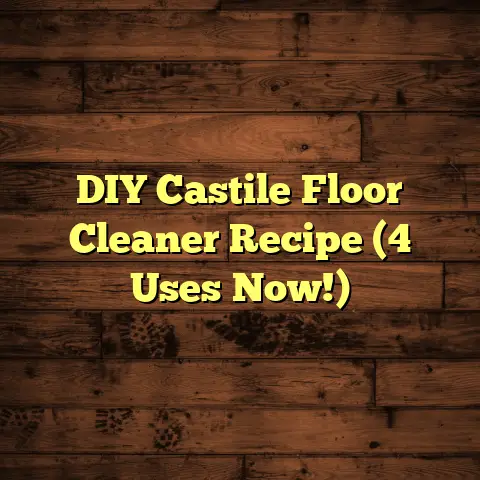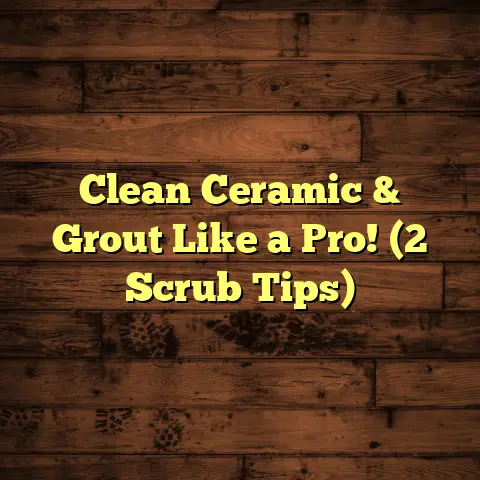How Much to Finish Floors? (2 Hidden Costs!)
Warning: The cost of finishing floors can quickly spiral out of control if you’re not aware of the hidden costs involved. What starts as a manageable home improvement project can turn into a financial headache if you’re not prepared. Trust me, I’ve seen it happen way too often in my years as a flooring contractor. So, let’s dive in and make sure you’re prepared!
1. Understanding Floor Finishing
Okay, so what exactly does “finishing floors” mean? Well, it’s more than just slapping on some shiny stuff. It’s a multi-step process designed to bring out the beauty of your floors while protecting them from daily wear and tear.
Think of it like this: you’re giving your floors a makeover and adding a shield all in one go!
Generally, finishing involves these steps:
- Sanding: This is where you remove the old finish and smooth out any imperfections. It’s a messy job, but absolutely crucial.
- Staining (Optional): Want to change the color of your wood? This is where you apply a stain to achieve your desired hue.
- Sealing: This is the protective layer. Sealants, like polyurethane, protect the wood from scratches, moisture, and everyday life.
Now, this process isn’t just for hardwood. While hardwood is the most common type of flooring to be finished, other materials like engineered wood and even some types of laminate can benefit from a refresh, though the process might be slightly different.
Why bother with all this work? Simple:
- Aesthetics: Freshly finished floors look amazing! They can completely transform a room.
- Durability: A good finish protects your floors from scratches, dents, and water damage, extending their lifespan.
- Value Enhancement: Refinished floors can significantly increase the value of your home.
Think of it as an investment that pays off in both beauty and resale value.
2. Average Costs of Floor Finishing
Alright, let’s get down to brass tacks: how much is this going to cost you? I’ve been in the flooring game for a long time, and I can tell you the price range can vary wildly, but here’s a general idea.
On average, you can expect to pay anywhere from $3 to $8 per square foot to have your floors professionally finished. I know that’s a pretty wide range, but several factors influence the final price.
Here’s a quick breakdown:
- Hardwood: $3 – $8 per square foot. This is the most common type of floor finishing, so the prices are pretty standard.
- Engineered Wood: $3 – $7 per square foot. Engineered wood is often thinner than solid hardwood, so the sanding process needs to be more delicate.
- Laminate: $2 – $5 per square foot (if refinishing is even possible). Some laminates can’t be refinished at all, but if they can, the process is usually less intensive.
Important Note: These are just averages.
The actual cost can vary based on:
- The condition of your floors: Floors in rough shape will require more prep work, which means more money.
- The type of finish you choose: Some finishes are more expensive than others.
- Your location: Labor costs vary significantly from region to region.
As for the timeframe, most floor finishing projects take 3 to 5 days to complete, depending on the size of the area and the complexity of the job. Keep that in mind when planning your project – you’ll need to be out of the house (or at least that room) during that time.
3. Cost Breakdown: Labor vs. Materials
So, where does all that money go? Let’s break down the costs into labor and materials.
- Labor: Labor costs typically account for 50% to 70% of the total cost of the project. This covers the contractor’s time, expertise, and the cost of running their business. Labor rates can vary significantly depending on your location and the contractor’s experience. A highly experienced contractor might charge more per hour, but they’ll likely do a better job and get it done faster, potentially saving you money in the long run.
- Materials: Materials account for the remaining 30% to 50% of the cost. This includes everything from sandpaper and stain to sealant and applicators. The type of materials you choose will also impact the cost. For example, high-end polyurethane sealants are more expensive than cheaper alternatives.
DIY vs. Professional:
Of course, you can save money by tackling the project yourself. DIY floor finishing can significantly reduce labor costs, but it’s not without its risks. I’ll delve deeper into that comparison later.
Here’s a table to illustrate the general cost breakdown:
| Cost Component | Percentage of Total Cost |
|---|---|
| Labor | 50% – 70% |
| Materials | 30% – 50% |
4. Hidden Cost #1: Floor Preparation
Okay, here’s where things get interesting – and where those hidden costs start to creep in. Floor preparation is absolutely crucial for a successful floor finishing project, and it’s often underestimated.
Think of it like prepping a canvas before painting. If the canvas is uneven or dirty, the final painting won’t look good, no matter how skilled the artist is.
Floor preparation typically involves:
- Repairs: This could include replacing damaged boards, filling in cracks and holes, and securing loose boards.
- Removing Old Finishes: This is usually done by sanding, but it can also involve chemical strippers in some cases.
- Subfloor Issues: This is where things can get really expensive. If your subfloor (the layer underneath your visible flooring) is damaged or uneven, it needs to be repaired or replaced before you can even think about finishing the floors.
The Costs of Preparation:
These preparation steps can add significantly to the overall cost of the project.
- Repairs: Replacing damaged boards can cost anywhere from $5 to $20 per board foot, depending on the type of wood and the extent of the damage. Filling cracks and holes is relatively inexpensive, but it can still add up if you have a lot of them.
- Removing Old Finishes: Sanding is usually included in the overall floor finishing cost, but if the old finish is particularly stubborn, it could add an extra day or two of labor, which will increase the price.
- Subfloor Issues: This is the big one. Subfloor repairs can range from a few hundred dollars to several thousand dollars, depending on the extent of the damage. If the subfloor needs to be replaced entirely, you’re looking at a major expense.
I remember one job where the homeowner was quoted $4,000 for floor finishing, but once we started the project, we discovered extensive water damage to the subfloor. The final bill ended up being closer to $8,000. That’s why it’s so important to have a thorough inspection before you start.
5. Hidden Cost #2: Maintenance and Future Refinishing
Okay, you’ve finished your floors, and they look amazing! But the costs don’t stop there. Maintaining your newly finished floors is essential to keep them looking their best and prevent future problems.
Ongoing Maintenance:
This includes:
- Cleaning: Regular sweeping and mopping are essential. But you can’t just use any old cleaner. You need to use products specifically designed for finished wood floors. These products are gentle and won’t damage the finish.
- Repairs: Accidents happen. Scratches, dents, and water damage can occur even with the best of care. Addressing these issues promptly can prevent them from becoming bigger, more expensive problems down the road.
- Protective Measures: Using rugs in high-traffic areas, placing felt pads under furniture legs, and avoiding wearing shoes indoors can all help protect your floors from wear and tear.
The Costs of Maintenance:
- Cleaning Products: Expect to spend $10 to $30 per month on cleaning products, depending on the size of your floors and the frequency of cleaning.
- Repairs: Minor repairs, like filling in small scratches, can be done yourself with a touch-up kit, which costs around $20 to $50. More extensive repairs, like replacing damaged boards, will require a professional and can cost hundreds of dollars.
Future Refinishing:
Even with the best maintenance, your floors will eventually need to be refinished. How often depends on several factors, including the type of finish you choose, the amount of traffic the floors receive, and how well you maintain them.
Generally, you can expect to refinish your floors every 7 to 10 years. The cost of refinishing will be similar to the initial finishing cost, so you need to factor that into your long-term budget.
I’ve seen homeowners who neglected their floors for years, thinking they were saving money on maintenance. But in the end, they had to pay much more to repair extensive damage and refinish the floors. It’s always better to invest in regular maintenance to prevent costly problems down the road.
6. Comparative Analysis: Hiring Professionals vs. DIY
Now, let’s talk about the age-old question: should you hire a professional or tackle the floor finishing project yourself? Both options have their pros and cons.
Hiring a Professional:
- Pros:
- Expertise: Professionals have the knowledge and experience to do the job right. They know how to properly prepare the floors, apply the finish, and troubleshoot any problems that may arise.
- Time Savings: Floor finishing is a time-consuming process. Hiring a professional frees up your time to focus on other things.
- Quality: A professional will typically deliver a higher-quality finish than a DIYer.
- Warranty: Most professionals offer a warranty on their work, so you’re protected if something goes wrong.
- Cons:
- Cost: Hiring a professional is more expensive than doing it yourself.
- Finding a Good Contractor: It can be challenging to find a reliable and trustworthy contractor.
DIY Floor Finishing:
- Pros:
- Cost Savings: DIY floor finishing can save you a significant amount of money on labor costs.
- Flexibility: You can work at your own pace and on your own schedule.
- Sense of Accomplishment: There’s a certain satisfaction that comes from completing a project yourself.
- Cons:
- Time Commitment: DIY floor finishing is a time-consuming process.
- Skill Required: Floor finishing requires certain skills and knowledge. If you’re not careful, you could damage your floors.
- Potential for Mistakes: Mistakes can be costly to fix.
- No Warranty: You’re on your own if something goes wrong.
Cost Comparison:
Here’s a rough cost comparison for a 500-square-foot hardwood floor:
| Item | Professional | DIY |
|---|---|---|
| Labor | \$1,500 – \$3,500 | \$0 |
| Materials | \$500 – \$1,000 | \$500 – \$1,000 |
| Total Cost | \$2,000 – \$4,500 | \$500 – \$1,000 |
As you can see, DIY floor finishing can save you a significant amount of money. However, it’s important to weigh the potential savings against the risks involved.
When to Hire a Professional:
- If you’re not comfortable with DIY projects.
- If you have limited time.
- If your floors are in bad shape.
- If you want a high-quality finish.
When to DIY:
- If you’re comfortable with DIY projects.
- If you have plenty of time.
- If your floors are in good shape.
- If you’re on a tight budget.
I’ve seen plenty of DIY floor finishing projects go wrong. One homeowner tried to save money by using a cheap sealant, and the finish started peeling within a year. They ended up having to hire a professional to redo the entire job, which cost them even more money in the long run.
7. Case Studies and Real-Life Examples
Let’s take a look at some real-life examples to illustrate the costs and challenges of floor finishing.
Case Study 1: The Budget-Conscious Homeowner
Sarah wanted to refinish the hardwood floors in her living room to increase the value of her home before selling. She got quotes from three different contractors, ranging from $3,500 to $5,000. Sarah decided to go with the lowest bid, thinking she was getting a good deal.
However, the contractor she hired cut corners on the preparation work. He didn’t properly sand the floors, and he used a cheap sealant. As a result, the finish was uneven and started to peel within a few months. Sarah ended up having to hire another contractor to redo the job, which cost her an additional $4,000. In the end, she paid more than she would have if she had hired a reputable contractor in the first place.
Case Study 2: The DIY Enthusiast
John is a handy guy who enjoys tackling DIY projects around the house. He decided to refinish the hardwood floors in his bedroom to save money. He watched a few YouTube videos, bought the necessary materials, and got to work.
However, John quickly realized that floor finishing was more difficult than he anticipated. He struggled to sand the floors evenly, and he made a mess with the stain. He also didn’t realize that he needed to wear a respirator while sanding, and he ended up inhaling a lot of dust.
After a week of hard work, John finally finished the floors. However, the finish was uneven, and there were several noticeable imperfections. He was disappointed with the results, but he didn’t want to spend any more time or money on the project.
Case Study 3: The Prepared Homeowner
Emily wanted to refinish the hardwood floors in her entire house. She did her research, got quotes from several contractors, and chose a reputable company with a good track record.
Before the project started, Emily had the contractor inspect the floors and identify any potential problems. The contractor discovered some water damage to the subfloor in the kitchen. Emily agreed to have the subfloor repaired before the floor finishing project began.
The project went smoothly, and Emily was thrilled with the results. The floors looked beautiful, and she knew that they would last for many years to come. She also appreciated the contractor’s attention to detail and their commitment to doing the job right.
These case studies illustrate the importance of thorough planning, budgeting, and choosing the right contractor (or having the right skills for DIY) when finishing floors.
8. Conclusion
Finishing floors can be a rewarding project that enhances the beauty and value of your home. However, it’s essential to be aware of the potential costs and hidden expenses involved.
Remember these key takeaways:
- Floor preparation is crucial. Don’t underestimate the importance of repairing damaged boards, removing old finishes, and addressing subfloor issues.
- Maintenance is key. Regular cleaning and prompt repairs can extend the life of your floors and prevent costly problems down the road.
- Weigh the pros and cons of hiring a professional vs. DIY. Consider your skills, time commitment, and budget before making a decision.
- Get multiple quotes from contractors. Compare prices, services, and warranties before choosing a contractor.
- Read reviews and check references. Make sure you’re hiring a reputable and trustworthy contractor.
- Factor in potential hidden costs. Be prepared for unexpected expenses, such as subfloor repairs or additional labor costs.
By following these tips, you can avoid unexpected financial burdens and ensure a successful floor finishing project. Plan well, budget wisely, and you’ll be walking on beautiful, newly finished floors in no time!





